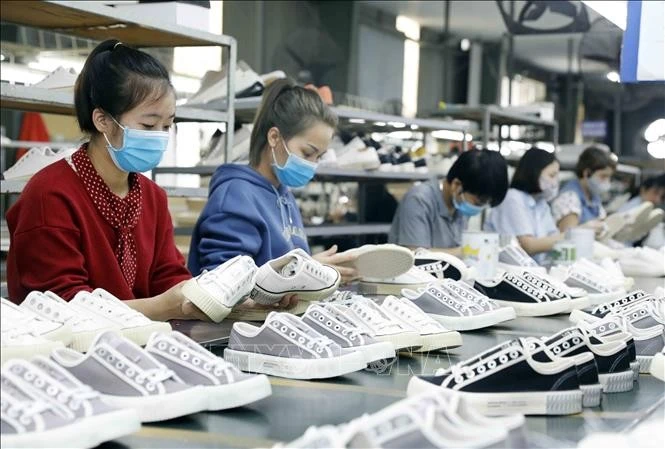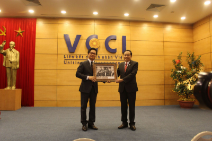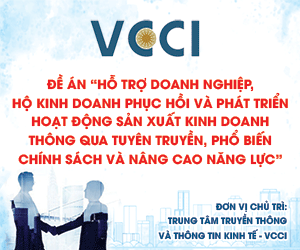Vietnamese garment, textile firms brace for US tariff’s impacts
If the US implements the announced 46% reciprocal tariff, Vietnamese textile and garment products would face average duties between 61-62% when entering the market, given the current 15-16%.

Industry leaders are crafting diversification strategies and calling for calm as Vietnam’s textile and footwear exports to the US potentially face new tariffs.
The Trump administration has announced a 10% tariff on all imports into the North American country while higher rates could be imposed on major trading partners, including a substantial 46% tariff on Vietnamese goods, with the textile and footwear sector among the hardest hit.
According to Chairman of the Vietnam Textile and Apparel Association (VITAS) Vu Duc Giang, of Vietnam's total textile and garment exports worth over 44 billion USD in 2024, the US market accounted for 40%. If the US implements the announced 46% reciprocal tariff, Vietnamese textile and garment products would face average duties between 61-62% when entering the market, given the current 15-16%. This would also negatively affect US consumers amid rising inflation.
Various tariff rates have been imposed on Vietnamese apparel exports to the US, with some products at 0%, others at 7% or 12%, while items like jackets face a 27% duty. Vietnam doesn't have a free trade agreement with the US so these tariff foundations already exist, Giang noted. He said the Government is implementing multiple solutions and continuing negotiations to determine how the tariff rates will be applied going forward.
The association advises businesses to remain calm while awaiting the outcome of bilateral Government negotiations, he stated.
Giang further emphasised that the US represents a crucial export market for Vietnamese textiles. Brands and buyers never "put all eggs in one basket" and they have considered Vietnam a strategic and long-term market. Therefore, despite upcoming tariff changes, he remains confident that textile exports in 2025 will face challenges but won't experience a catastrophic shock.
He laid stress on the significance of diversifying markets as well as exports, avoiding over-reliance on any single market. He particularly underscored that Vietnamese businesses must invest more in research and development, expand markets, and implement technological innovations in production to reduce costs and create distinctive products. This approach will enable businesses to compete fairly without fearing risks from tariff policies and non-tariff barriers from major trading partners in the future.
Meanwhile, Chairman of the Board of Directors of Viet Thang Jean Co., Ltd Pham Van Viet said that US tariffs on Vietnamese goods are something businesses have anticipated and planned for, but the potential 46% rate comes as a surprise. He suggested Vietnam reduce import tariffs and increase purchases of US goods such as automobiles, electronic equipment, aircraft, agricultural products and food, stating the moves will not significantly impact domestic production.
Under tariff pressure, Vietnamese businesses could accelerate investments in technology, digital transformation, and green production to meet higher international market requirements. This will enhance the competitiveness and added value of Vietnamese goods in the long run.
General Director of the Vietnam National Textile and Garment Group (Vinatex) Cao Huu Hieu said to date, the US has not announced specific tariff rates for individual product lines or sectors, including textiles and garments. As an immediate solution, he urged businesses not to panic, emphasising that maintaining calm is essential during difficult times.
According to Hieu, Vinatex is encouraging businesses to diversify markets and material sources to avoid excessive dependence on China, while strictly controlling product origins. The textile industry could increase the use of US cotton to reduce the trade imbalance.
In this context, manufacturers must collaborate with customers to find optimal solutions that maintain orders, preserve jobs, and ensure profits. However, it's clear that increased tariffs will inevitably affect consumer demand.
Vice President and General Secretary of the Vietnam Leather Footwear and Handbag Industry Phan Thi Thanh Xuan stated that the US imposing a 46% tariff on imports from Vietnam presents an extremely significant challenge for the footwear industry in the coming period. The sector accounts for 40% of total export turnover to the US market, valued at over 10 billion USD, so high duties will certainly slow export growth. With rising costs, businesses will need solutions to maintain production and further optimise manufacturing processes to offset increased tax expenses in the near future.
Vietnam has signed 16 free trade agreements with countries, including the EU-Vietnam Free Trade Agreement and the Comprehensive and Progressive Agreement for Trans-Pacific Partnership, she said, suggesting enterprises continue diversifying export markets and capitalise on those with free trade agreements.
Besides, she described the challenges as opportunities for companies to restructure production processes, increase labour efficiency, and reduce input costs. Xuan also recommended that ministries and agencies implement better policies, particularly administrative procedure reforms, tax and customs improvements, faster tax refunds, and streamlined customs procedures to create favourable conditions for businesses to reduce production costs./.








